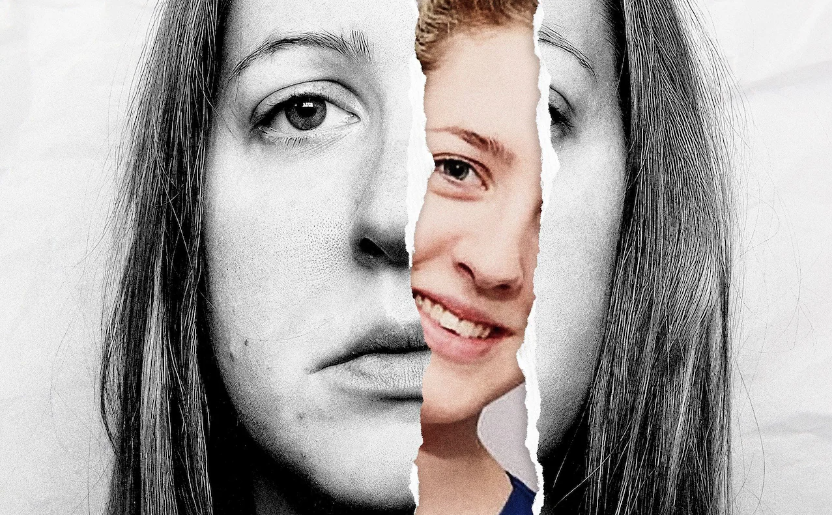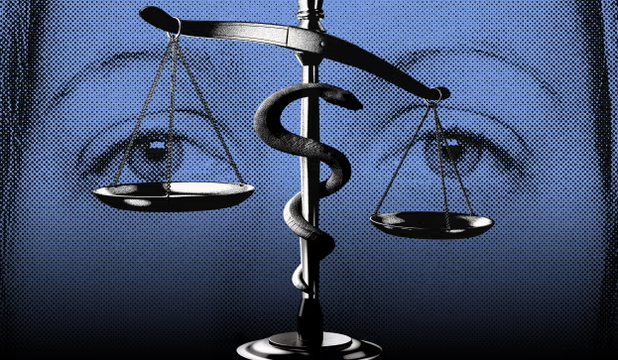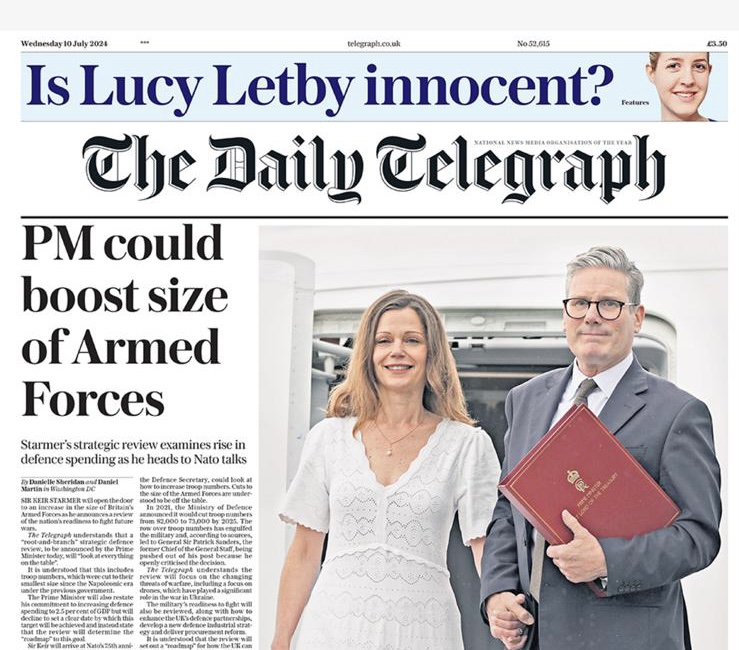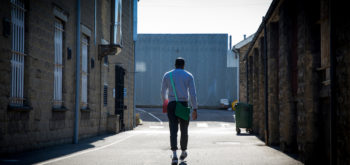Leading experts have spoken to the Justice Gap about concerns over the safety of the conviction of Lucy Letby. Media restrictions pending a second trial of the former neonatal nurse prevented discussion of the case – although a 13,000-word investigation in the New Yorker challenged the statistical base of the prosecution and questioned whether any crime had been committed. Campaigners now talk to Jon Robins about why they are so convinced that Lucy Letby is the victim of a modern day ‘witch-hunt’ and how a failure to grasp how ‘clusters’ of patients’ deaths are a natural occurrence might (once again) have led to a miscarriage of justice.
Lucy Letby was convicted of the murder of seven babies at Manchester Crown Court last August. Since then, there has been a failed appeal and earlier this month she was found guilty at retrial of attempting to kill a seventh baby. As everyone from the Sun to the Guardian’s Polly Toynbee united in revulsion at the ‘evil baby killer’, Dr Richard Gill was convinced the nurse was an appalling miscarriage of justice. And one that he had seen coming.
A decade before Letby’s conviction, a paediatric nurse called Lucia de Berk had been found guilty of seven murders and three attempted murders of children in her care at Juliana Children’s Hospital in The Hague in 2003. She was the Netherlands’ most prolific serial killer; until she became the country’s worst miscarriage of justice when she was exonerated in 2010.
 British-born statistician Richard Gill, emeritus professor of mathematical statistics at the University of Leiden in the Netherlands, campaigned for de Berk’s conviction to be overturned. He wrote about the danger of other similar wrongful convictions for the Justice Gap a decade ago in 2014 in characteristically forthright style: ‘How to become a convicted serial killer (without killing anyone)’.
British-born statistician Richard Gill, emeritus professor of mathematical statistics at the University of Leiden in the Netherlands, campaigned for de Berk’s conviction to be overturned. He wrote about the danger of other similar wrongful convictions for the Justice Gap a decade ago in 2014 in characteristically forthright style: ‘How to become a convicted serial killer (without killing anyone)’.
Gill wrote his 2014 article to highlight the plight of Ben Geen who had been sent to prison, also in 2003, on two counts of murder as well as causing grievous bodily harm to 15 other patients. Geen was portrayed in the press as ‘the nurse who killed for kicks’; the prosecution had argued that ‘an unusual pattern’ emerged at the A&E at Horton General, a small hospital in Oxfordshire, when 18 patients apparently suffered unexplained respiratory arrests in a three-month period.
Leading statisticians including Gill, Sir David Spiegelhalter, of Cambridge University and Professor Norman Fenton, of Queen Mary’s University of London, pointed out that there was, in fact, nothing unusual in a cluster of such events. The miscarriage of justice watchdog, the Criminal Cases Review Commission wasn’t persuaded (here). The Ben Geen case has been covered on the Justice Gap and featured in my book Guilty Until Proven Innocent (Biteback, 2018).
Gill has become an observer of the glacial movement of the criminal appeal system. ‘It could take five to 10 year before Lucy Leytby is exonerated,’ Gill tells me. But, he believes, that the media narrative (‘evil baby killer’) is about to shift as revelations about the dire state of the Countess of Chester hospital continue apace.
The interviews for this article were done before the restrictions lifted – and prior to a recent run of articles raising serious questions about the conviction: Felicity Lawrence in the Guardian, Sarah Knapton, Martin Evans, Sophie Barnes and Will Bolton in the Daily Telegraph and (former Criminal Cases Review Commission commissioner) David James Smith in the Independent on Sunday.

From the Daily Telegraph – July 9 (Lucy Letby: Serial killer or a miscarriage of justice?)
The ‘lottery’ fallacy – and the smoking gun0
‘It has been a witch hunt and the mainstream media have contributed to the witch hunt,’ Gill tells me. ‘It helped that her defence was pretty feeble. In cases like this, the court journalists scribble down things which their editors would like to put in their newspapers. The prosecution is playing to the media. Of course, they’re addressing the jury, but really they’re addressing the public – and the court journalists go along with that.’
Gill’s online campaigning on behalf of Lucy Letby has been provocative and relentless. During the trial, Cheshire Police wrote to him saying his blogging was in ’serious and flagrant’ contempt of court and had come to the attention of the judge, Mr Justice Goss. The academic published the warning on his own website. ‘“Contempt of court” means disrespect of a court,’ he wrote. ‘Now, it is certainly true that I am disrespectful of the court which convicted Lucy Letby.’
What’s he trying to achieve? ‘That’s a good question,’ he replies. ‘I’m absolutely disqualifying myself from being any kind of court expert in this trial and future trials. I aim to communicate and connect with people and to spread information. I put a flag in the sand, stand up and say, first of all, I think that the trial was unfair, the police investigation was unfair and, I also say, I’m certain Lucy Letby is innocent – as certain as you can be about these things.’
But how can Gill be ‘certain’? ‘I have seen how these cases arise out of nothing. You can completely understand everything on the basis of the innocence hypothesis. In other words, this is what happens when things go wrong. There is a calamity and a scandal in an NHS maternity unit or neonatal unit every year. There is a serial killer nurse in England maybe once in 50 years. The probability that this is just another NHS scandal is enormous. Every single piece of evidence only makes me more certain of that.’
John O’Quigley is an honorary professor in the department of statistical science at the University College of London. The Letby case is all about stats, he argues – last September the Royal Statistical Society called on Lady Justice Thirlwall’s inquiry into the case to include statistical evidence in its terms of reference. The RSS, which didn’t receive a response, published a report tackling statistical bias in criminal trials – Healthcare serial killer or coincidence? – the month before the Letby trial started. Gill was one of the co-authors.
O’Quigley has gone public with his concerns and recently published an article (Suspected serial killers and unsuspected statistical blunders) for an academic jounal setting out the incorrect statistical assumptions in three cases: Sally Clark, Lucia de Berek and Letby.
In a second yet to be published article, O’Quigley poses the question: ‘So how did Lucy Letby go from being viewed as a caring nurse, devoted to the wellbeing of her charges, to someone suspected of being among the most evil criminals in history.’ He says that impetus came about ‘for no stronger reason’ than a perceived ‘spike’ in the incidence rate of deaths among neo-nates in the unit. ‘It was felt that such an unusually high cluster of deaths could only be explained by the workings of a sinister hand,’ he argues. He calls Letby’s notes, as far as the press and pubic were concerned, ‘the smoking gun’ and yet, without the believed ‘spike’, there would be no case to answer.
The academic explains this by reference to what he calls the ‘lottery fallacy’ which is ‘an everyday statistical blunder’ that even the numerate make; but which has caused ‘some of the most glaring miscarriages of justice’ in recent times. According to the (incorrect) logic of the ‘lottery fallacy’: the probability of winning the lottery is tiny – say, less than one in one hundred million – therefore the winner must have cheated.
Applying this line of reasoning to the NHS, O’Quigley supposes 200 clinical centres caring for patients of a certain type – and, on average, there are about two deaths per year per centre. However, in one centre there is a perceived ‘spike’ – 10 deaths. If you fall for the lottery fallacy, then the odds of that happening innocently appear tiny – apparently, a probability of five divided by 100,000 (0.00005). But adopt a more careful approach – and a common statistical model (which deals with variability within any centre and variance due to differences between the averages of different centres) – probability is closer to 0.5 – or, as O’Quigley puts it, a number so much larger ‘that we would conclude that nothing at all unusual has been observed’.
Gill explains in the Lucia de Berk case, the prosecution expert put the probability of a coincidence of the incidents happening when she was on duty as ‘one in 342 million’. ‘I later published an alternative analysis coming out at something like one in 50,’ he said.
O’Quigley, like Gill, believes that Lucy Letby to be a miscarriage of justice: ’There is no scientific evidence against her. It’s made up and it’s just wrong.’ He is outraged that a supposedly damning chart showing that Letby was present at every ‘incident’ involving children on the ward gained such traction (see here).
‘According to the prosecution, it is clear evidence; it’s nothing of the sort and any statistician – a first year undergraduate in statistics – could show that’s nonsense. You really don’t need a sophisticated understanding of statistics to see that it is a complete crock.’
John O’Quigley
His point is that what identifies an incident as ‘an incident’ is the presence of the suspect – in other words, it’s an incomplete and rigged dataset. Or as O’Quigley puts its: ‘All its actually shows is that when the suspected nurse was on duty – she was on duty.’
The same point was made in the Ben Geen case by his barrister Mark McDonald by reference to what is often called the ‘Texas sharpshooter fallacy’.
‘Imagine we are both looking at the side of a shed,’ McDonald told me. ‘I say: “I bet you £20 I can get ten bullets into the centre of a target from a distance of 200 yards using my machine gun.” You say: ‘No way.’ So, I fire my machine gun into the side of the shed releasing 100 bullets. They’re all over the place. I walk up to the shed and draw a circle around ten of the bullets and place a target over it. That’s effectively what they did. They selectively put the target round ten patients. That’s why I say no crime is committed here.’
How, I ask O’Quigley, can he be sure Lucy Letby is innocent? He says his family has asked him the same question. ‘Listen, I cannot be certain that she’s innocent. I can be certain that she did not get a fair trial. I can be certain about that. I can be certain that that chart evidence is a crock and that the jury was misled. I can also be certain of the fact that there was nothing so unusual about that so called ‘spike’. You cannot be certain that people didn’t do things, you know, for all I know, she might have organised 9/11.’
He is mindful of the tragedy of Sally Clark who was jailed in 1999 after the deaths of her two infant children and freed in 2003. The former head of the Royal College of Paediatrics, Sir Roy Meadow claimed the chance of two children dying naturally in such circumstances was 73 million to one – a claim the Royal Statistical Society debunked. Meadow asserted that, as the likelihood of a child suffering cot death was reckoned to be one in 8,500, it would therefore logically follow that the chance of two unrelated incidents occurring in a single family would be one in 8,500 multiplied by 8,500, thus coming to the figure of one in 73 million
‘I remember saying at the time this will obviously never fly,’ O’Quigley says. ‘The calculation was so ridiculous that they could never possibly prosecute that and that’ll be the end of that. But somehow they did convict.’ He felt certain that the justice system would rectify such a glaring wrongful conviction. Sally Clark was finally freed in 2003 but she never recovered from her ordeal. She died at the age of forty-three, three years after being released.
We need to talk about Lucy
According to Peter Elson, there is an informal network of some 30 serious-minded professionals – not online trolls or keyboard warriors – but (largely doctors), statisticians and scientists who are united in their concerns about the safety of the conviction. Elson is a former fund manager who started a blog in lockdown (Chimp Investor) which took an eccentric detour from his usual observations on the financial markets to championing the former neonatal nurse. Elson co-hosts a podcast We need to talk about Lucy with retired doctor Michael McConville. Since March the pair have presented some 19 episodes in which they pick apart what’s known of the evidence. They don’t pull their punches.
Elson describes his approach to investments as ’statistically-driven’ and ‘looking for patterns in markets one could take advantage of’; hence an interest in so-called ‘cluster cases’ and Lucy Letby. He describes the case as ‘a tragedy in three acts’. The first is what happened at the hospital back in 2015/16 with the scapegoating of Lucy Letby. The second being the police investigation where, as Elson puts it, ‘a rather conflicted, unqualified expert inveighled his way into the investigation’.
Elson is referring to Dr Dewi Evans, a retired paediatrician who advised the police on their investigation and then became the prosecution’s lead medical expert at the trial. Evans had read about the criminal investigation into the spike of deaths at the Countess in the press and contacted the police to offer his services as an expert.
According to Elson, the ‘third act’ of the Letby trial is the trial itself where, as he puts it: ‘Prosecution witness after witness stood up, particularly the experts, and dismissed all of the obvious explanations — particularly, the ones that were set out in the six post mortem records citing natural causes.’
What’s his motivation? ‘Like many people I have an abhorrence of injustice. I’m not sure where that comes from.’ It might be due to what he describes ‘as a pretty awful boarding house experience – and being a victim of injustice myself’. ‘I feel I have a very great responsibility in doing what I am doing,’ he says.

From the Guardian, July 9 (Lucy Letby: killer or coincidence?)
Media blackout
There was a brief of opportunity for dissenting voices to make themselves heard after the end of last year’s trial before the reporting restrictions were imposed; but the press (largely) remained quiet.
‘Horror can make us blind to doubt. For years I angrily scorned Chris Mullin’s campaign for the release of the Birmingham Six,’ wrote Peter Hitchens in the Daily Mail. The commentator was ‘so furious about the filthy cruelty of the crime’ that he ‘could not see straight about the weakness of the prosecution’. ‘So now I must ask: What if Lucy Letby is not guilty? Actually I very much wish somebody else in the national media would raise this.’
The Press Gazette ran an article in which court reporters who covered the case raised concerns about the oppressive reporting restrictions. They didn’t raise concerns about ‘due process’ – the focus of the article was about the emotional impact of reporting on the case.
Steve Phelps is a TV producer with a lengthy CV of heavyweight investigative credits to his name from Channel Four’s Dispatches to the BBC’s landmark Rough Justice series. ‘As a journalist it’s been extremely frustrating to be unable to report on a case which has all the characteristics of an egregious miscarriage of justice,’ he tells the Justice Gap.
Reporting restrictions are intended to protect the defendant, but Phelps points out that the restrictions in the Letby case were imposed at the end of her first trial ‘ostensibly so that the jury in her trial for the attempted murder of Baby K would not be prejudiced’. ‘Yet you would struggle to find anyone who didn’t know that nurse Lucy Letby is a convicted serial killer of newborn babies,’ he notes. ‘So the restrictions serve only to silence those of us who wish to explain to the general public why no murders were committed in a hospital where babies died because the standard of care on the neonatal unit was woefully inadequate.’
Phelps points to the problems faced by a struggling unit followed years of underfunding of the NHS. ‘The unit was simply incapable of dealing with babies as much as 13 weeks premature,’ he says. Phelps argues that ‘the hospital itself accepted this’ when it downgraded the unit in July 2016 so that extremely vulnerable babies would be born in bigger and better hospitals. ‘That is why the excess deaths stopped in July 2016. It was nothing to do with Lucy Letby’s removal from the ward.’
The threat of contempt didn’t stop the New Yorker publishing its extraordinary investigation. The 13,000-word article has convinced many readers on this side of the Atlantic that Lucy Letby is either innocent or else that the prosecution case was so threadbare that she should never have been convicted in the first place – and probably both.
Journalist Rachel Aviv wade through 7,000 pages of court transcripts of a 10-month trial. The prohibitive cost of such transcripts is often an insurmountable hurdle for campaigners and journalists concerned about the safety of a conviction. The New Yorker paid for the transcripts.
Relying on parliamentary privilege, the Conservative MP Sir David Davis said Aviv’s investigation ‘raised enormous concerns about both the logic and competence of the statistical evidence that was a central part of that trial.’ ‘That article was blocked from publication on the UK internet, I understand because of a court order,’ Sir David told MPs. ‘Now, I’m sure that court order was well intended but it seems to me in defiance of open justice. Will the Lord Chancellor look into this matter and report back to the House?’
Aviv is a staff journalist on the New Yorker. She became aware of Lucy Letby six months into her trial when researching the case of an Australian mother called Kathleen Folbigg, who, in 2003, was found guilty of smothering her four children and pardoned in 2023 – the case has been called Australia’s greatest miscarriage of justice. She assumed that Letby would be acquitted given ‘the fact that the prosecution’s evidence was circumstantial and that the scientific claims seemed very flimsy’.
The journalist was interviewed for the New Yorker’s own Reporters’ Notebook and asked what piqued her interest in the goings-on in a hospital in the North West of England.
‘On almost a sociological level,’ she replied, ‘it was surprising to see how a tentative opinion, first voiced by a few doctors, kept gathering strength: the more that people signed on to the belief, the harder it was for others to resist the idea. Even some of Letby’s friends and colleagues, who had previously supported her, decided they must have been wrong about her all along and turned against her.’
Eventually, Aviv said, this belief ‘became the national consensus’ affirmed by the Prime Minister and politicians. ‘And, yet, to believe that she was guilty required accepting a proposition that on its face was pretty outlandish: that a nurse who had been described as kind, caring, and dedicated—even the police acknowledged that they could not find anything about her that seemed inherently suspicious—decided to start killing babies with diverse, unprecedented methods in such a discrete and masterly way that no one saw her doing it.’
Aviv contrasts the Draconian application of contempt law on this side of the Atlantic with the US’s First Amendment right to report on the criminal courts. After the Letby verdicts in August last year, she said there was ‘a brief window’ for journalists to report, but that closed in September when the prosecution announced the retrial. ‘And, yet, during the ten months of the trial and the five-year investigation leading up to it, there had been an enormous amount of articles published about each step of the case. With almost no exceptions, those articles presented Letby as the incarnation of evil,’ Aviv said. ‘It came to feel to me that the reporting restrictions actually allowed the state’s narrative of the case to proliferate, at the expense of other perspectives.’
What next?
If Lucy Letby is innocent, then her only hope in clearing her name resides with the chronically underfunded and overwhelmed Criminal Cases Review Commission.
The irony is not lost on Steve Phelps. As he puts it, Lucy Letby has been ‘let down by every single arm of the state’ starting with the fact that the babies died because the NHS in that hospital was ‘so under-resourced and understaffed and in chaos’.
The police ‘investigation’ started from the premise that they ‘already had a suspect’; and then the CPS brought a case based ‘largely on the evidence of a retired paediatrician who didn’t even have licence to practice while he was advising the police’. The trial was ‘a travesty’ with Lucy’s defence calling just a single witness.
As he puts it: ‘If you go full circle, having been refused an Appeal she will end up in the CCRC which, like the hospital in which she worked, is now under-resourced, understaffed and unable to deal with a case as complex as this.’
Support the Justice Gap, buy PROOF







